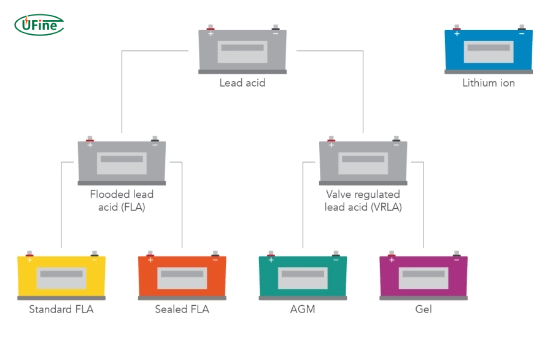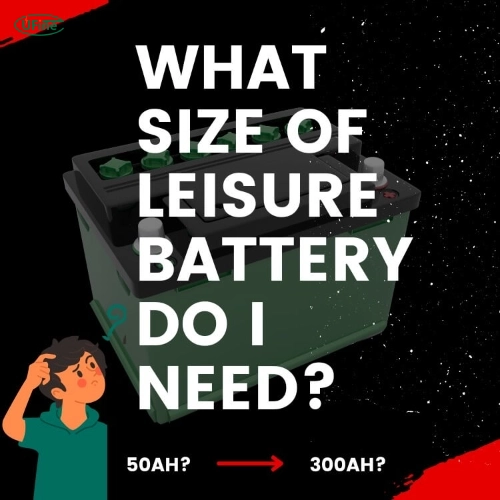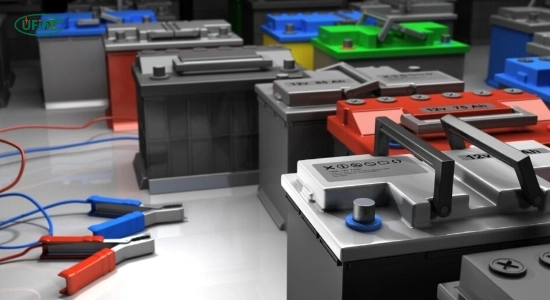What size leisure battery do I need? This is a fundamental question for anyone planning an adventure that involves camping, traveling in a motorhome, or sailing. Choosing the correct leisure battery is essential to ensure sufficient power to run your appliances and gadgets during your trip. In this comprehensive guide, we’ll break down everything you need to know about leisure batteries, from their types and sizes to how to calculate your power needs.
Part 1. What is a leisure battery?
A leisure battery provides a steady amount of power over a prolonged period, unlike a car battery, which delivers a large burst of energy for a short time to start an engine. People use leisure batteries in various applications, including caravans, motorhomes, boats, and off-grid setups to power lights, fridges, water pumps, and other electrical devices.
Part 2. Types of leisure batteries
Several types of leisure batteries are available, each with its advantages and disadvantages. Understanding these types will help you make an informed decision on which one suits your needs best.
Lead-acid batteries
Lead-acid batteries are the most common type of leisure battery. They are affordable and have a good lifespan when properly maintained. However, they are heavy and require regular maintenance, including topping up with distilled water.
AGM batteries
Absorbent Glass Mat (AGM) batteries are a type of lead-acid battery but have a different internal structure. They are maintenance-free, can be mounted in any position, and have a longer lifespan than traditional lead-acid batteries. However, they are more expensive.
Gel batteries
Gel batteries contain a silica-based gel that suspends the electrolyte. They are also maintenance-free and have a meager self-discharge rate, making them ideal for seasonal use. Gel batteries are robust and can withstand deep discharges, but they come at a higher cost.
Lithium batteries
Lithium batteries are the newest and most advanced type of leisure battery. They are lightweight, have a long lifespan, and can discharge more deeply than lead-acid batteries. Despite their high initial cost, their long-term benefits often outweigh the expense.
Part 3. Determining the right size leisure battery
Calculating your total power consumption would be best to determine what size leisure battery you need. Here’s a step-by-step guide with practical examples:
1. List your appliances
Please list all the electrical appliances and devices you plan to use, their power ratings (in watts), and the hours you expect to use them daily. For example:
- LED lights: 10W, 5 hours/day
- Portable fridge: 50W, 24 hours/day
- Water pump: 30W, 1 hour/day
- Mobile phone charger: 5W, 2 hours/day
2. Calculate daily watt-hours
For each appliance, multiply the power rating by the hours used daily to get the daily watt-hour (Wh) consumption. Sum up the watt-hours for all appliances to get the total daily consumption.
Example calculations:
- LED lights: 10W x 5 hours = 50 Wh
- Portable fridge: 50W x 24 hours = 1200 Wh
- Water pump: 30W x 1 hour = 30 Wh
- Mobile phone charger: 5W x 2 hours = 10 Wh
- Total daily consumption: 50 Wh + 1200 Wh + 30 Wh + 10 Wh = 1290 Wh
3. Convert watt-hours to ampere-hours
Divide the daily watt-hour consumption by the battery voltage (usually 12V for leisure batteries) to convert it to ampere-hours. This gives you the daily Ah requirement.
Daily Ah requirement=Total daily Wh/12V
- Example calculation: Daily Ah requirement=1290 Wh/12V=107.5 Ah
4. Determine battery size
Multiply the daily Ah requirement by how many days you want the battery to last without recharging. Add a 20-30% safety margin to account for inefficiencies and unexpected power needs.
If you want the battery to last for two days without recharging:
- Total Ah requirement=107.5 Ah/day×2 days=215 Ah
Adding a 25% safety margin:
- Total Ah with safety margin=215 Ah×1.25=268.75 Ah
So, in this example, you would need a leisure battery with a capacity of around 270 Ah.
How to Choose the Best Leisure Battery?
Part 4. Factors affecting battery performance and maintenance
Several factors can influence the performance and lifespan of your leisure battery. Being aware of these can help you maximize the efficiency and longevity of your battery.
1. Depth of discharge (DoD)
Depth of Discharge refers to how much of the battery’s capacity users use. Shallow discharges (using less than 50% of the battery’s capacity) can significantly extend the battery’s lifespan. Deep discharges, especially below 50%, can shorten the battery’s life.
2. Charging cycles
A charging cycle consists of one complete discharge and recharge of the battery. Most leisure batteries have limited cycles they can complete before their capacity diminishes. Frequent deep discharges reduce the number of effective cycles.
3. Temperature
Extreme hot and cold temperatures can affect a battery’s performance. Batteries generally perform best at moderate temperatures. High temperatures can increase the rate of self-discharge and reduce lifespan, while cold temperatures can reduce the battery’s capacity.
4. Maintenance
Proper maintenance is crucial for lead-acid batteries. This includes regular charging, checking electrolyte levels, and ensuring clean and secure terminals. AGM, gel, and lithium batteries require less maintenance, but users should periodically check them.
Part 5. Tips for extending leisure battery life
To get the most out of your leisure battery, follow these tips:
1. Regular charging
Keep your battery charged, especially during long periods of inactivity. This helps prevent sulfation in lead-acid batteries.
2. Avoid deep discharges
Keep discharges shallow, using no more than 50% of the battery’s capacity. This extends the battery’s lifespan.
3. Use a battery monitor
A battery monitor can help you keep track of your battery’s state of charge and overall health, allowing you to take action before problems arise.
4. Proper installation and storage
Ensure the battery is securely mounted and protected from vibrations. Store the battery in a cool, dry place when not in use, and keep it fully charged to prevent sulfation. Periodically check the charge level and recharge if necessary.
Part 6. FAQs
-
How often should I charge my leisure battery?
It would be best to charge your leisure battery as often as necessary to keep it above 50% charge. This depends on your usage and the type of battery. Regular use and charging help maintain battery health. -
Can I connect multiple leisure batteries?
You can connect multiple leisure batteries in parallel to increase capacity or in series to increase voltage. Ensure the batteries have the same type, capacity, and age for best results. -
How do I choose between AGM, gel, and lithium batteries?
Consider your budget, maintenance preferences, weight and space constraints, and power requirements. AGM and gel batteries are maintenance-free, while lithium batteries offer high energy density and long lifespan but are more expensive. -
What is the best way to store a leisure battery during winter?
For winter storage, fully charge the battery and store it in a cool, dry place. Periodically check the charge level and recharge if necessary to prevent sulfation. -
How do I know when my leisure battery needs replacing?
Signs that your leisure battery needs replacing include reduced capacity, difficulty holding a charge, and visible damage such as bulging or leaking.
Related Tags:
More Articles

Long-Lasting Beauty Devices: Find the Best Rechargeable Battery!
Discover the best rechargeable beauty devices, compare battery types, and learn how to choose and maintain the longest-lasting beauty tool for your needs!
60Ah Battery: The Complete Guide You Need Before Choosing One
Find out if a 60Ah lithium battery is right for you. Learn about its lifespan, costs, maintenance tips, and how to pick the best one!
Is a 3000 mAh Lithium Battery Enough for Your Device?
Wondering what a 3000mAh battery means? Learn about its power, lifespan, types, and how to choose the best one for your device!
Learn About Lithium Battery Kits
Discover the ultimate guide to lithium battery kits—types, safety, installation, and cost analysis. Make the right choice for solar, RV, or off-grid power!
Selecting the Perfect Ah for Your 48V Li-ion Battery Pack
Struggling to choose the right Ah for your 48V Li-ion battery pack? This in-depth guide covers everything you need to make the best choice. Find out more now!






